Sarbamangala Temple in East Burdwan offers endless pilgrimage for the soul
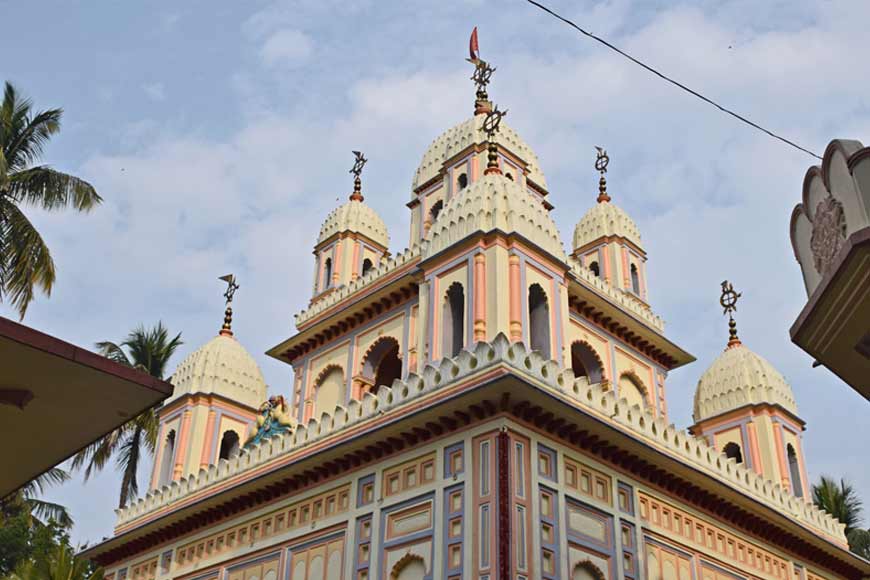
Hindu texts present diverse views on the position of women, ranging from feminine leadership as the highest goddess, to limiting gender roles. The Devi Sukta hymn of Rigveda declares the feminine energy as the essence of the universe, the one who creates all matter and consciousness, the eternal and infinite, the metaphysical and empirical reality (Brahman), and the soul, (supreme self) of everything. However, worshiping the Goddess turned into the biggest annual festival in another part of India — in the Eastern side — especially in Bengal in the 16th-17th century. Hindu religion emphasizes monotheism - it is believed all the mother goddesses are the avatars of Adi Shakti or Adi Bhagwati or Maa Maha Kali.
The ancient Sarbamangala Temple, located on D.N. Sarkar Road, Sarbamangala Para, East Burdwan, is steeped in history and blended with myth and lore. Built by Maharaja Kirti Chand of Burdwan in 1702 A.D., this holy shrine is one of the 52 Shakti Pithas (shrines and pilgrimage destinations in Shaktism), dedicated to Adi Shakti. Various Puranas such as Srimad Devi Bhagavatam states the existence of varying numbers of 51, 52, 64 and 108 Shakti Pithas. The temple of Goddess Sarbamangala is believed to contain the umbilicus or the navel of the goddess.
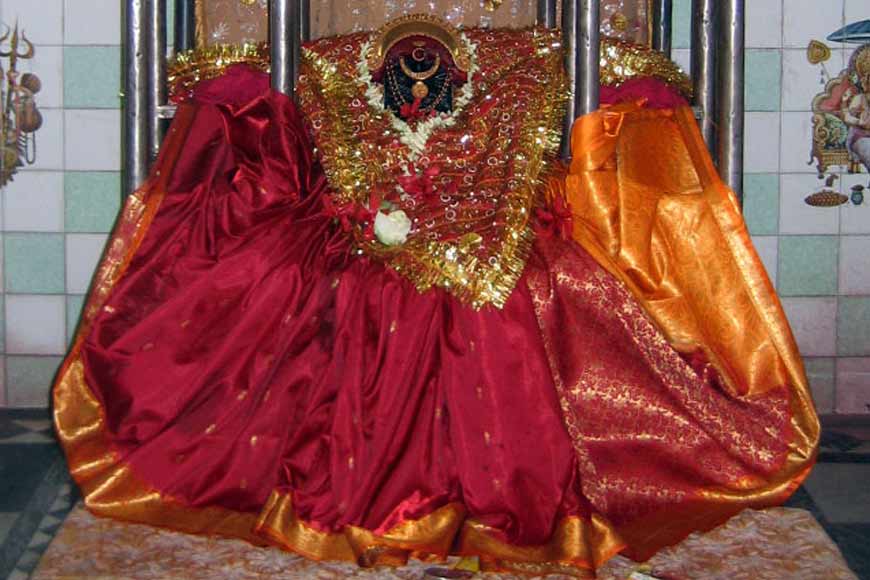
This ancient temple attracts thousands of devotees daily from all walks of life who throng to the holy shrine to offer prayers. During festive days like the Bengali New Year’s Day (Poila Baisakh), Bipadtarini Vrata, Sharodiya Durgotsov, Kali Puja, Nabanna and Shiv Ratri Vrata, the number swells to lakhs. On 7th September 2000, the Government of India declared this temple as a place of ‘public worship’ considering its historical and archaeological importance.
According to research, the origin of Goddess Sarbamangala is believed to be more than 2,500 years ago and is mentioned in the Markandeya Purana, one of the 18 major Mahapuranas, as a powerful entity of Adi Shakti. The idol of the Goddess is engraved on a touchstone and has nine hands on each side constituting 18 weapons which are a lotus, conch shell, axe, arrow, hammer, bow, sword, shield, wheel, bell, snake, kamandalu (an oblong water pot), bead, rod, thunder and Shakti. The incantation of each weapon is cited in Sri Sri Chandi by Swami Jagadiwarananda of Belur Math, Ramakrishna Mission.
There is also another dimension to the origin of the Goddess Sarbamangala. Beneath the idol of the Goddess, the names of the weapons and handcrafted items are engraved in Khorosthi script. The Kharoṣṭhī script, also known as the Gāndhārī script, was an ancient Indo-Iranian script that was introduced at least by the middle of the 3rd century BCE, possibly during the 4th century BCE, and remained in use till 3rd century CE. Goddess Sarbamangala is also mentioned by Mukunda Chakroborty in ‘Chandimangal Kavya’, as well as in verse penned by Bharat Chandra Roy. These texts acknowledge the Goddess as not only the presiding deity of the royal family of Burdwan since ancient times, but also as the protector Mother of the entire Rarh region of the Chhotanagpur Plateau.
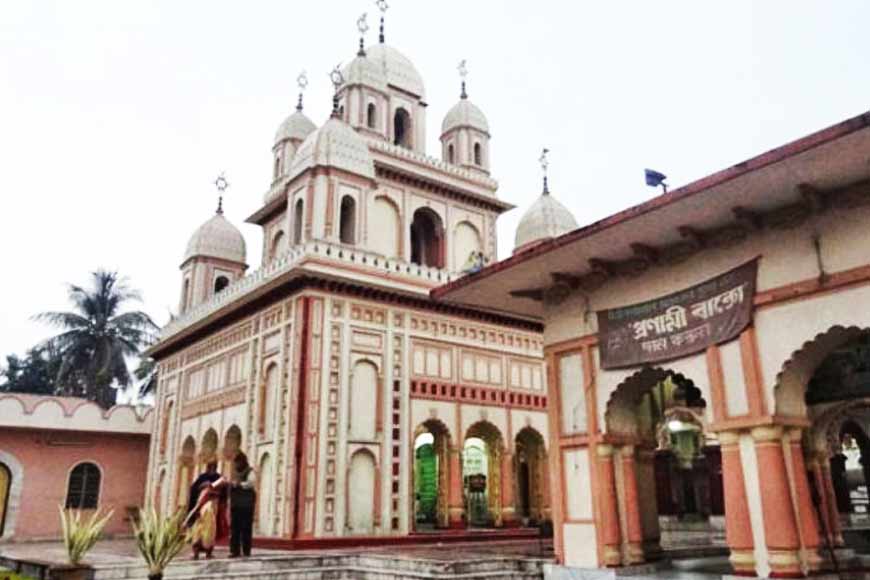
According to local legend, the ancient idol of Goddess Sarbamangala that we see in the temple was discovered by a group of kiln workers who rushed to the court of the Burdwan king with the information. Maharaja Kirti Chand Rai ordered his men to bring the idol from the kiln and establish it at a suitable site. The statue of the deity was installed on a mound on the bank of the Banka River which is a tributary of the Damodar River, in 1702. A temple was later built there by Maharaja Kirti Chand Roy in the first decade of the 18th century and was worshipped by the Burdwan Raj family since its establishment.
The idol of Mata Sarbamangala is around 1000 years old. The sculpted figure is 12 inches x 8 inches. According to legends, Goddess Sarbamangala had killed the infamous buffalo demon (Mahishashur) and hence known as ‘Mahisha Mardini,’ meaning ‘the killer of the buffalo.’ Since the idol of the Goddess is seated on a lion, she is also known as ‘Singha-vahini.’
According to historical sources, in the mid-18th century, Bargis (light cavalry mercenary group of the Maratha Empire) invaded the western part of Bengal comprising principalities of Birbhum, Burdwan and Bankura and indulged in large-scale plundering of the countryside for the next 10 years (1741–1751) destroying gigantic proportions. They overthrew the royal family of Burdwan, raided villages, ransacked and burnt granaries, demolished houses, temples, and mosques, and decimated indiscriminately.
Raja Chitra Sen Rai who had just ascended the throne of Burdwan in 1740, was overthrown by the Bargis and forced to flee his empire and take refuge at Garh of Cowgachhi near Triveni with a band of trusted followers. It is said that the king dreamt he was lying abandoned in a distraught condition on the bank of the Damodar River one night when Goddess Sarbamangala appeared in his dream and ordered him to rescue her idol and establish her in a temple. Following divine instructions, Raja Chitra Sen Rai reclaimed the touchstone idol from the kiln workers and built the present temple, and established the idol in the holy shrine.
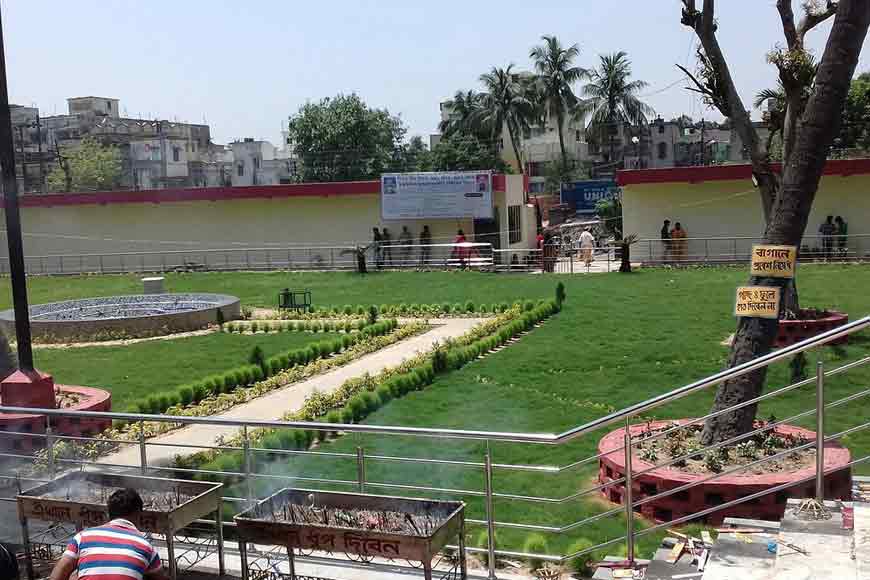
Interestingly, Devi Sarbamangala Temple at East Burdwan is the first Navaratna temple of undivided Bengal and is an architectural gem of the region. This style of architecture came into vogue in Bengal in the 18th century. The temple consists of nine ornamental spires. There are three layers where the second layer of the temple has four chariots and the third layer has five chariots. The portico consists of a roof supported by columns at regular intervals. It is typically attached as a porch to a building and is a beautifully constructed extension of the temple. The main entrance complex is a two-storey structure and has a big arch gateway that faces the East.
It is believed that Bhaskar Pandit, the leader of the Maratha Bargis, was an ardent devotee of Goddess Durga and as soon as he spotted the temple of Devi Sarbamangala, he gave up his arms and retreated with his army. Peace was restored permanently. Within the main temple complex, there are several temples dedicated to the different incarnations of Lord Shiva, including Tarakeswar, Rameswar, Kamaleswar, Chandreswar, and the Mitraswar Shiv Temples. Mitraswar temple stands just opposite the main shrine of the Sarbamangala Devi Temple facing the idol of the Goddess. This temple has five pinnacles which have been built according to the Odisha style of architecture.
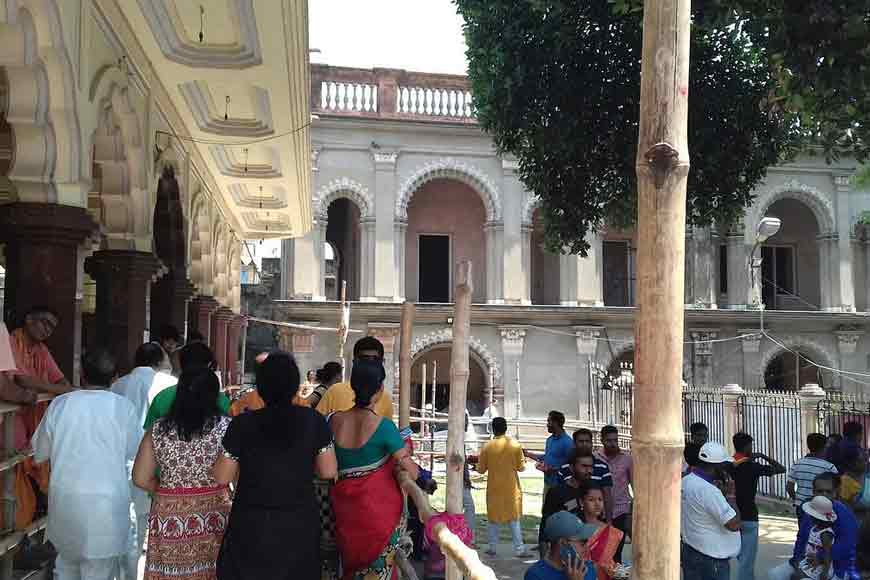
In the second decade of the 19th century, Maharaja Tej Chand of Burdwan, the grand-nephew of Maharaja Kirti Chand gave orders to construct two other Shiva temples which also faced the main temple of Goddess Sarbamangala. An interesting fact about these Shiva idols or Shiva lingams is that they are all made of white marble instead of the usual black marble one gets to see.
Since its inception in 1702, Devi Sarbamangala was worshipped as the ‘Kula-devata’ (family deity) by the Burdwan royal family and the temple’s maintenance used to be borne by the Burdwan Raj Estate. However, after the abolition of the Zamindari system on June 16, 1959, the then-king of Burdwan, Maharaja Uday Chand Mahatab formed a Trust Board comprising seven members, which was to be headed by the Chairman of the Burdwan Municipality. Since then, the Trustee Board has been in charge of managing the temple, daily worship of the deity, taking care of the temple properties, and organizing everything during special celebrations and festivals.
Over the years, the temple’s earnings had dwindled and funds were required for renovation and upkeep of the temple. At this juncture, devotees and large commercial firms came forward with handsome donations and finally in 1994, the Trust Board renovated and upgraded the temple. A new ‘Bhog Ghar’ measuring approximately 4000 square feet was constructed inside the temple premises where ‘bhog’ (food offered and distributed in the name of the reciding deity) is cooked daily to feed the large number of pilgrims who visit the temple. The renovations also included the re-modelling of all the Shiva temples inside the premises as well as the creation of a beautiful garden with one big fountain within the temple campus.
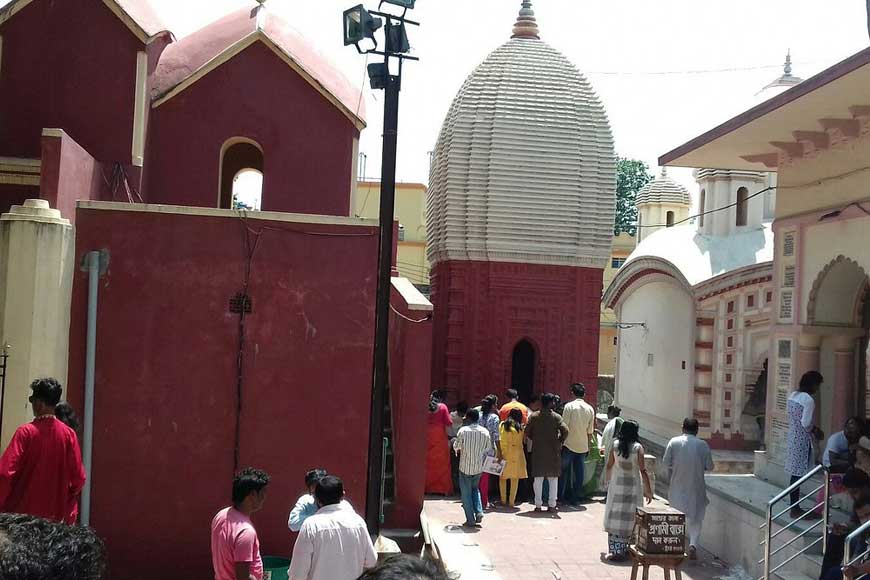
A spacious square-shaped ‘Nat Mandir’ in front of the main temple of Goddess Sarbamangala, measuring approximately 5000 square feet, was constructed. A Yatri Niwas with a capacity to accommodate 40 pilgrims who drop by from different parts of the country was built. A range of other facilities were also introduced including installing more lights and fans, arranging drinking water, telephone services, toilets and car parking facilities.
At present, the District Administration of East Burdwan and the Burdwan Municipal Authority have joined hands to help and support the development activities in and around the complex of the Sarbamangala Devi Temple in deliberation with the Government of West Bengal.










